What to plant in August: 14 flowers to sow or grow this month
Here's what to plant in August for a garden packed with vibrant color, from sunny rudbeckias to delicate sedums
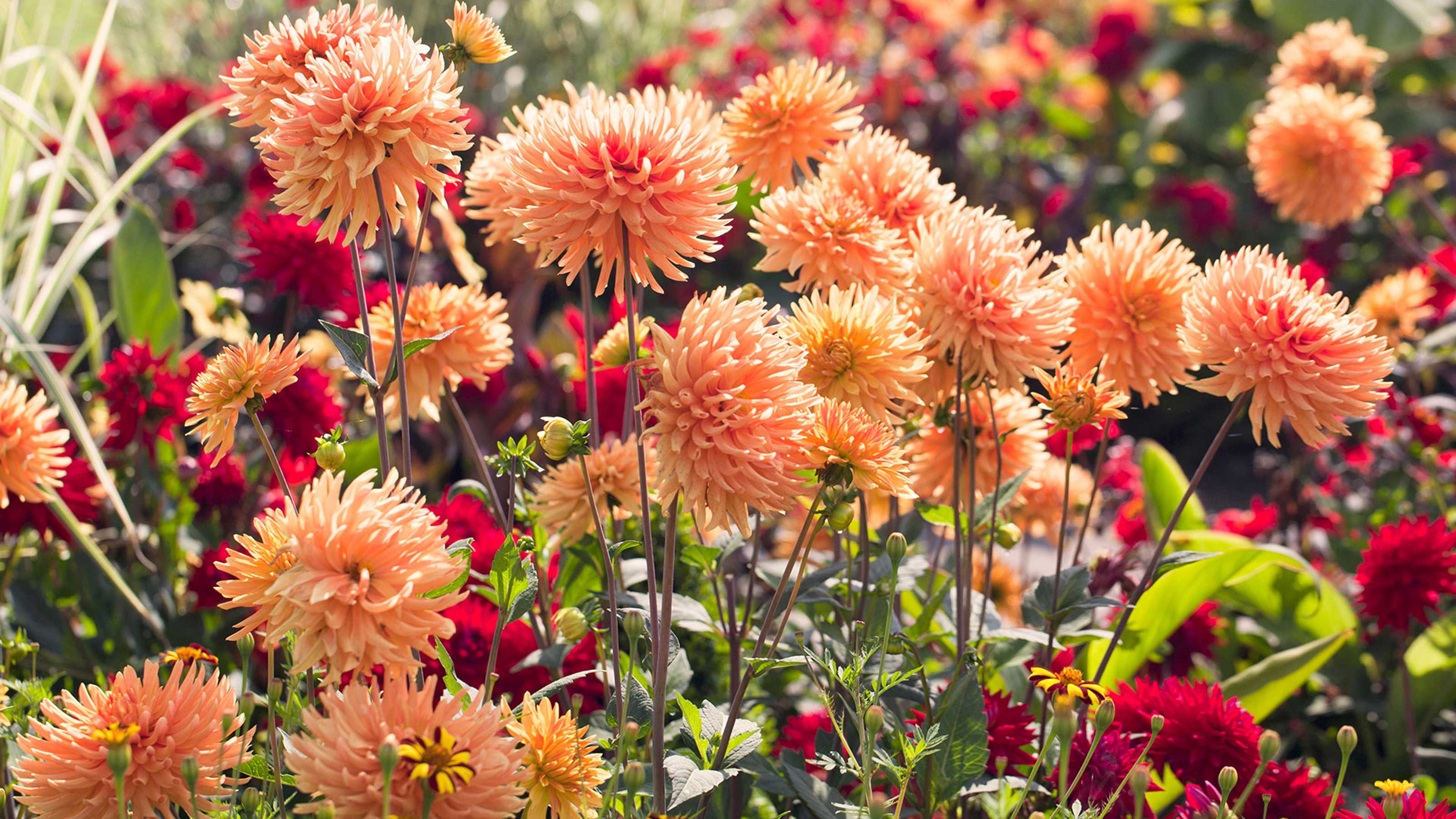

When deciding what to plant in August you have slightly more scope than in July, as we move towards the cooler, damper days of the fall.
However, the soil may still be dry after a scorching summer and your beds and borders are probably still full of plants, so this is another month when starting plants from seeds is the best way to go.
This means you are spoilt for choice, as hardy annuals, biennials and perennials can all be sown in trays now, though leave half hardy annuals until April or early May next year, when the temperature starts to rise again.
When sowing, it is important to make sure your trays and pots are clean, and that you use fresh compost and tap water to help prevent your seeds being contaminated by pests and diseases that may be lurking in harvested rainwater.
Make sure seedlings are well ventilated too, removing the coverings from your seed trays when the green shoots of germination appear.
Follow these tips for what to plant when and you should have a garden full of flowers next summer.
What to plant in August: 14 top picks for late summer sowing and growing
Dahlias are an obvious choice when it comes to what to plant in August, as they will flower right up to the first frosts and several varieties bring added interest with bronze foliage. You can also rely on long-blooming salvias, astilbes, sunny rudbeckias and gaillardias, asters, sedums and heleniums.
The importance of regularly watering plants, especially with new plants, can't be stressed enough this month. It is crucial that plants are well hydrated as they get established as dehydration will hamper growth and weaken the plants.
1. Lupins

Lupins are a cottage garden staple, reliable bloomers with spires of dense flowers in shades of pinks, purples and blues as well as reds, yellow and cream.
They usually grace the centre and rear of garden borders but you can also buy dwarf varieties such as ‘Pixie Delight’ that will add color towards the front of beds, and also grow well in containers (though watch out for aphids).
Lupins are hardy annuals and members of the pea family, so they develop long tap roots and substantial root systems. Because of this, we usually sow them straight into the soil where they can get deeply rooted and strongly established.
They like a sunny spot and fertile soil, so add plenty of well rotted compost or manure before planting. Keep the soil well watered as the seeds germinate and thin any seedlings that appear close together.
Top tip: If you have no room for sowing outside, or your soil is still too hard and dry, sow your lupins in deep pots and modules. Care for them in the greenhouse through winter and plant them out next spring when the soil starts to warm up.
2. Honesty

Honesty (Lunaria annua) is one of our most recognisable plants. A hearty biennial and member of the brassicas family, it produces large clumps of flowers that are superseded by pretty, delicate flattened seedpods.
The blooms are usually pink or white, though some varieties produce a mix of the two. And of course we don’t just grow them for their impressing stands of soaring flowers – the papery brown seedpods, often described as ‘pennies’ are worth leaving on the plant for autumn interest, though do harvest some for household arrangements.
Being biennials, honesty will produce its early leaves this year then go on to grow and flower next spring before setting seed and dying back.
Honesty does best in alkaline soil types and will happily self-seed, creating stunning clumps of color in summer, as well as winter interest if you leave the seedpods in situ.
Top tip: If you decide to sow your honesty seeds in modules, plant them out before they grow too large. Like all brassicas, they develop a substantial taproot and don’t do as well if the roots don’t have enough room to develop properly.
3. Nigella
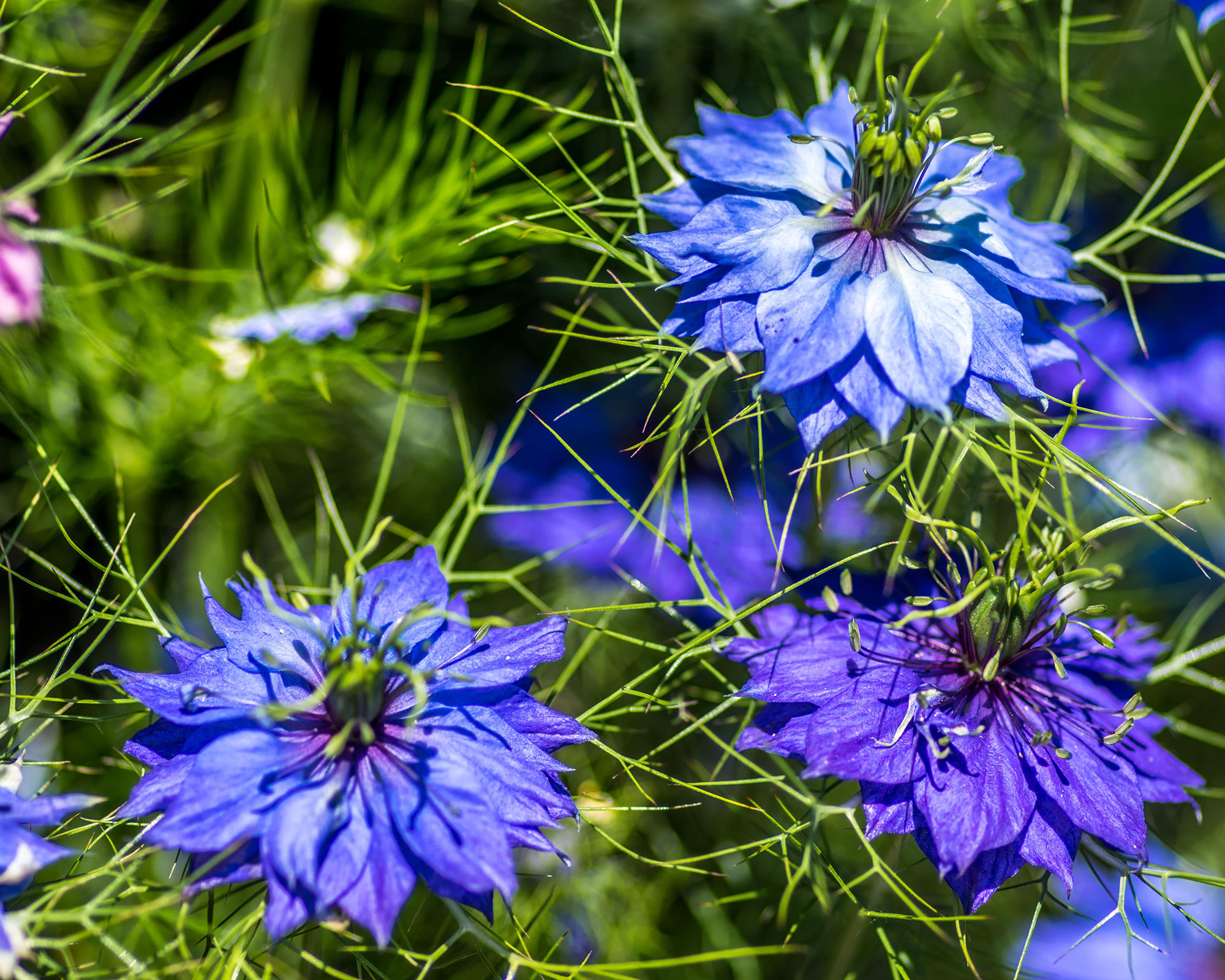
Nigella, also known as love in a mist, is a traditional cottage garden plant that comes in a multitude of colors, from pale blue to midnight indigo and deep maroon.
It is a hardy annual flower that is easy to grow, long in flowering and with the added bonus of attractive seed heads that lend themselves to indoor arrangements.
You can sow them now or wait until spring, though autumn-sown plants usually flower earlier and better. So if you're wondering what to plant in August, these are a good choice.
Scatter the seeds thinly in fertile, well-drained soil in a sunny spot, then cover with more soil. Water the seeds using a watering can with a fine rose attached, and label the area so you don’t disturb the seeds when gardening.
Once the seeds germinate and are large enough to handle, thin them out and protect them from pests. Keep their soil damp and they will put on a terrific show next year, from May right through to early autumn.
Top tip: Nigella is so easy to grow it's called a ‘sow and forget’ plant and will happily self-seed, forming pretty clumps of flowers around the garden. Its seeds are large and easy to collect so you can also sow them where you wish.
4. Dahlias
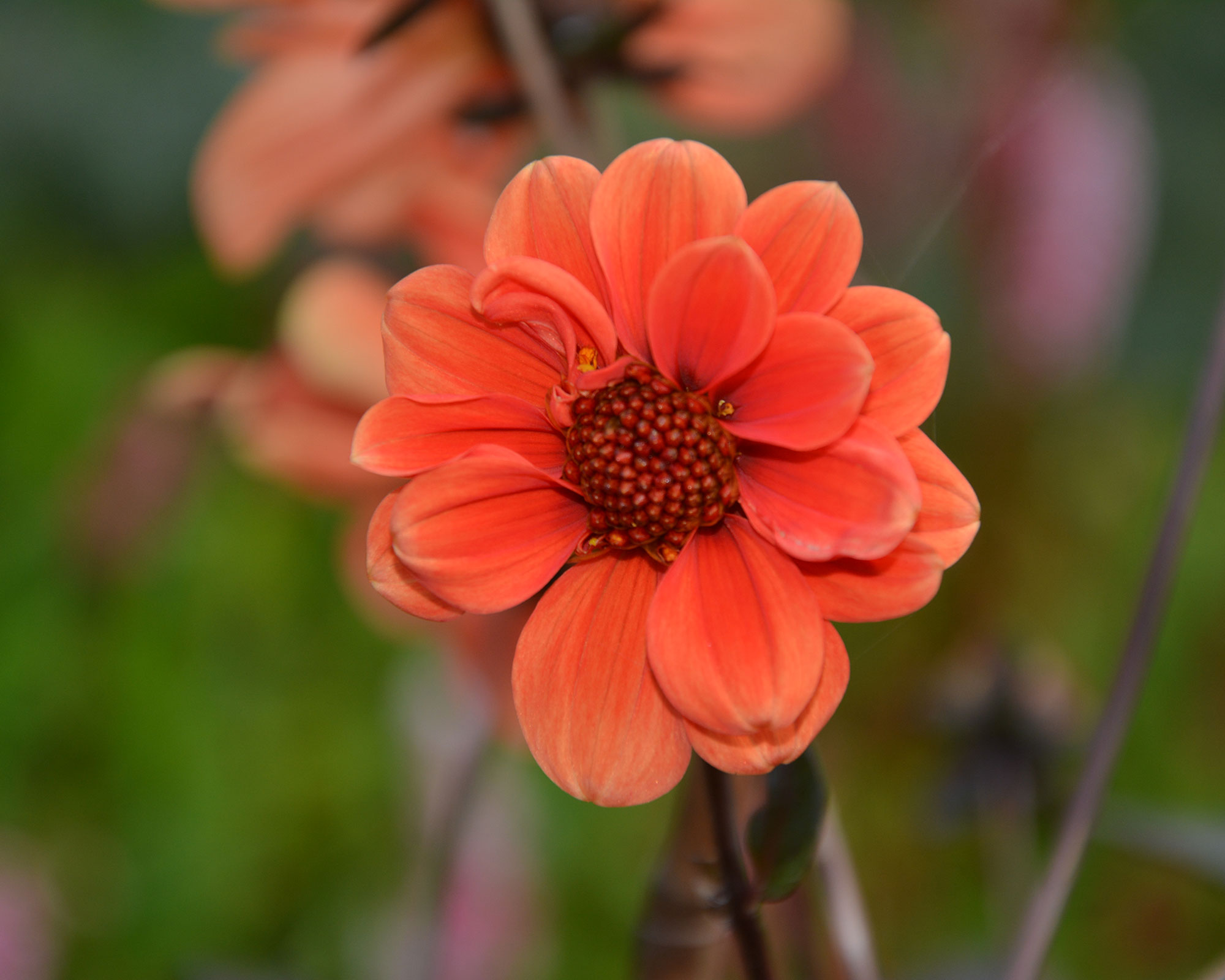
Delicious dahlias are one of the most diverse and long-flowering perennials, guaranteeing you color and interesting leaves from midsummer until deep into the fall. And August is a fine time to plant them out.
All types of dahlias are renowned for their glossy petals in myriad dazzling colors, as well as their huge range of shapes and styles, from little pom-pom heads to dinner plate-sized blooms.
An added bonus is that dahlias are as happy as part of your container gardening ideas as they are in the soil, as long as they are kept fed and watered. In fact, container-growing your plants makes it easier to move them into a greenhouse or porch in winter, when the top growth dies down and the tubers need storing in a tray of compost somewhere frost-free.
Top tip: Earwigs will munch through dahlia flowers and leaves. To catch them, fill a small plant pot with newspaper and upend it on a stick near your plants. Earwigs will hide in there during the day and you can collect them up and move them elsewhere (try not to kill them as they will eat aphids, an even worse pest).
5. Wild carrot
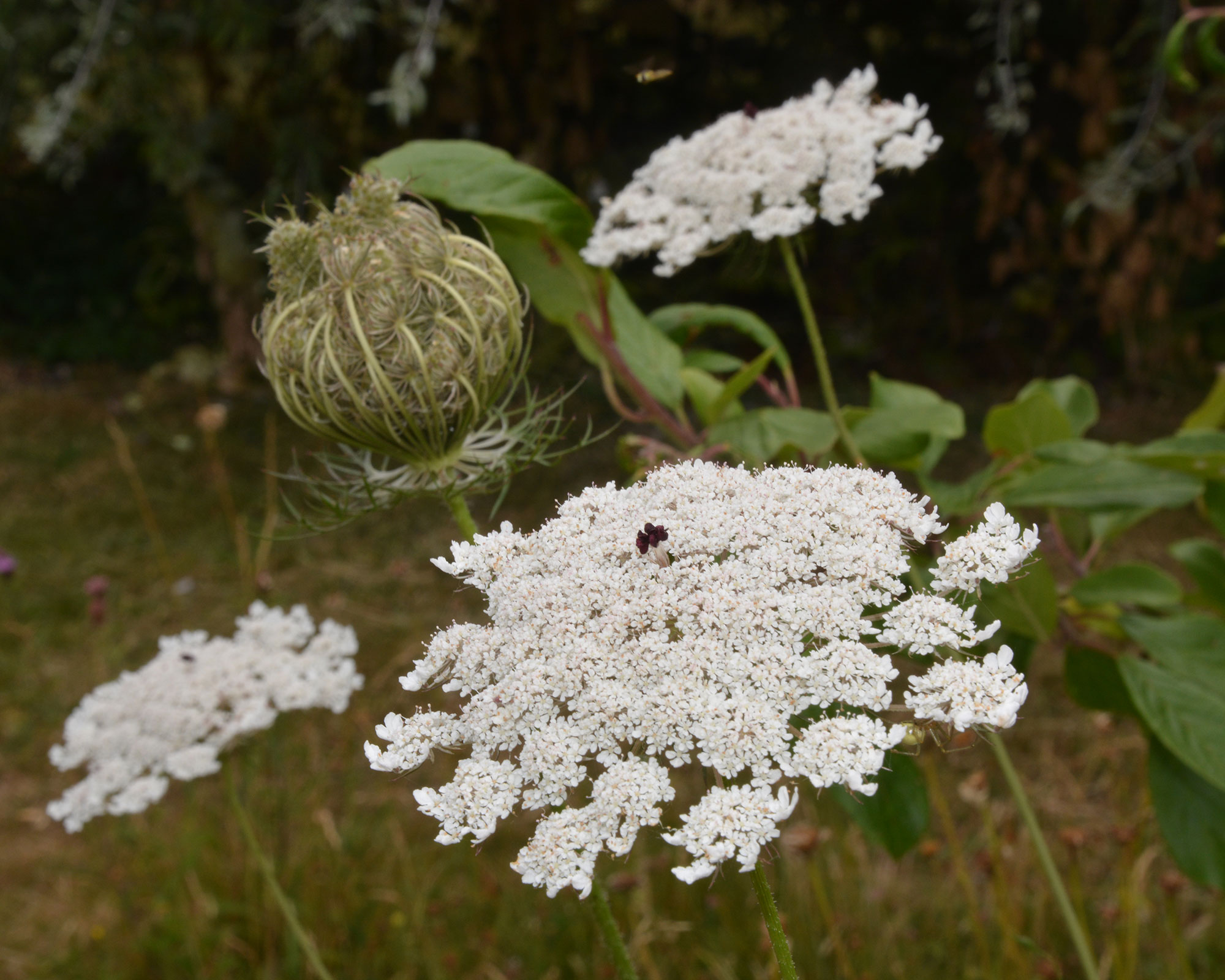
Wild carrot, Daucus carota, is the extremely beautiful, ornamental version of the root vegetable. Also known as Queen Anne’s lace, it thrives in poor soil, so doesn't need much tending, self-seeds easily and is a wonderful option if you're looking for the best plants for pollinators.
Delicate, with frondy leaves and broad white umbels of petals surrounding an intriguingly small, dark red central flower, it is perfect for the middle of borders and pairs fantastically with other hardy annuals such as cornflowers, Nigella and scarlet field poppies.
The delights of wild carrot don’t end when the flowers fade, as the spent heads curl up into an attractive ‘bird’s nest’ which adds interest and structure to the winter garden.
Do be aware that it self-seeds easily, so you may need to thin the naturally occurring seedlings when they appear.
6. Sedums
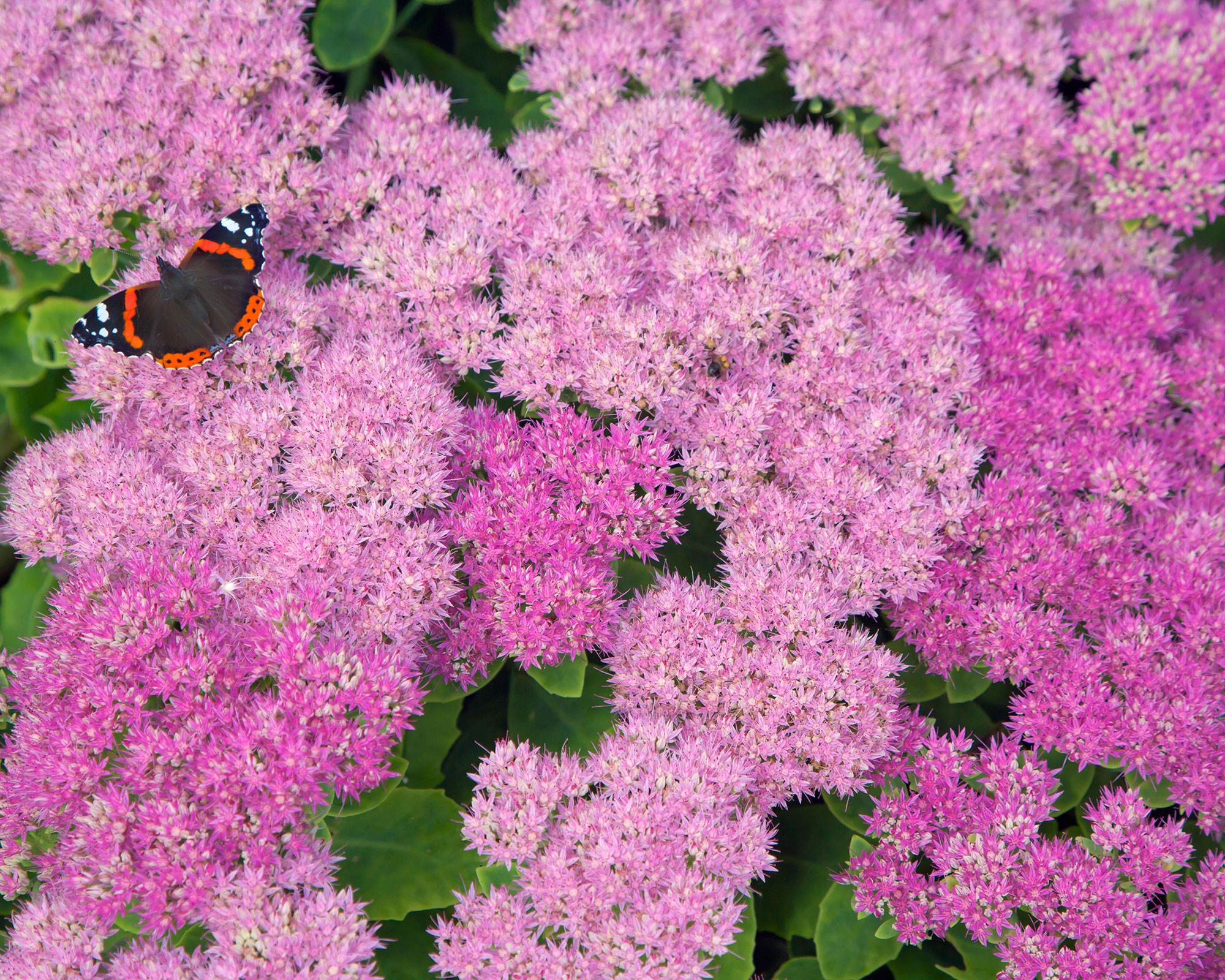
Fleshy-leaved sedums, also known as stonecrop and ice plants, produce mounds of pretty pink flowers over unusual, pale green stems and leaves. If you're thinking about what to plant in August, they're a great choice.
They love a sunny spot in well-drained soil and look amazing when several are grouped together at the front of a border. They are one of the best drought-tolerant plants too, as once they are established they need little watering.
Plus, because they flower late in the year, often well into the fall, they are an essential source of food for late-flying butterflies and bees.
Top tip: Leave the flowerheads attached through winter as they look beautiful covered in frost. Then cut them back in spring when next year's new growth is starting to show through.
7. Salvias
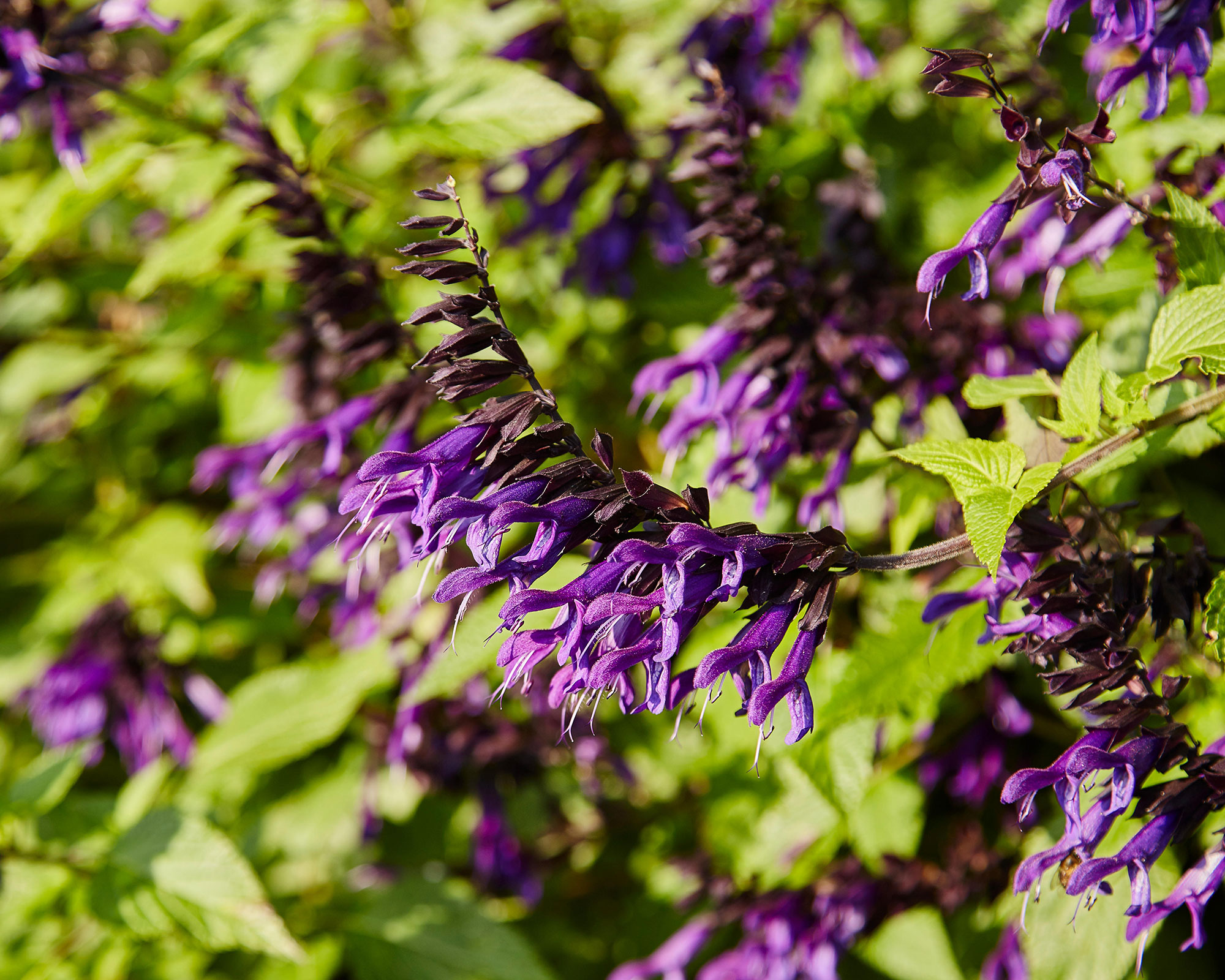
Many ornamental salvias will flower well into the fall, deep purple 'Amistad' being a key variety. There are more than 900 varieties and they do best on free-draining, sunny soil. Their leaves often give off a delicious herby scent when crushed between thumb and forefinger.
They also grow well in garden planters, which is an added bonus in exposed gardens as they can be moved indoors through winter to continue growing.
Hardy varieties are cut back hard in winter or early spring, while half-hardy plants (check the label when buying) are best cut back in autumn and overwintered in a frost-free greenhouse. If you are not sure of the status of yours, leave your salvia pruning until the spring.
If you can't decide which varieties to plant, some of garden expert Monty Don's favorite salvias include Salvia Guaranitica 'Amante' and Salvia 'Amistad'.
8. Rudbeckias

Sunny rudbeckias can flower right the way through to October. They brighten the garden with their chunky, daisy-like blooms in fiery shades of yellow, red and orange – perfect if you love a hot-hued garden color scheme.
Also known as black-eyed Susan, they like a sunny spot and are one of the easiest plants to grow, with annual and biennial varieties such as double-petalled 'Cherokee Sunset' and 'Aries' started from seed in spring, and perennial 'Herbstone' and 'Goldsturm' planted at any time of year.
Mature clumps of perennial varieties that are four or five years old can be lifted and divided in spring or autumn.
Top tip: Most perennial rudbeckias come in shades of yellow, while annual varieties grown from seed generally have more varied coloring, with dramatic burnt oranges and reds often available.
9. Crocosmia
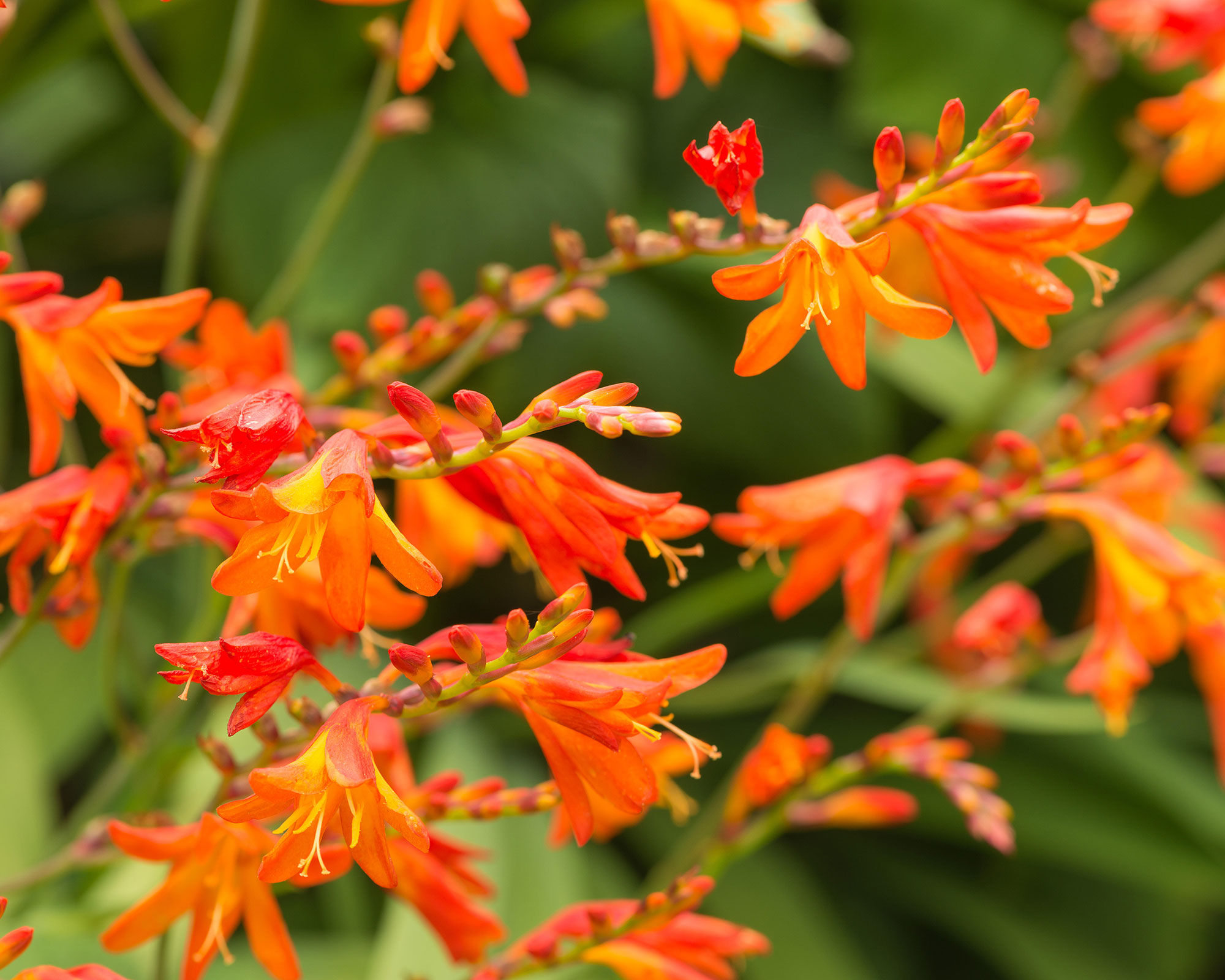
If you can't stand the heat, avoid growing crocosmia, because these red, yellow and orange beauties will add plenty of fire to your flower bed ideas.
Also known as montbretia and hailing from South Africa, crocosmia produce their glossy, hanging racemes of flowers above tall, elegant and strappy leaves that take up little room, allowing you to plant lots of complementary things around them.
They can become invasive as they mature and the corms from which they grow start to multiply. Solve this problem by digging them up and dividing the corms, keeping the young, firm ones and discarding those that are old or feel soft and squidgy to the touch.
Top tip: Because they hail from the southern hemisphere, crocosmia are not reliably hardy in northern and exposed gardens, so need mulching with a generous layer of well-rotted compost or manure in late fall once their leaves have died back.
10. Cornflowers

Cornflowers are easy to grow and are a lovely choice for your cottage garden ideas. Their seeds are either sown around August or next spring, though those that go in the ground this year may flower before those that are started the next, giving you a longer succession of flowers.
As well as the traditional blue shade, they also come in a variety of colors including the deep 'Black Ball' and pink, blue and mauve 'Polka Dot'.
They like a sunny spot and should be watered regularly during dry spells. Deadhead too, to keep plants producing more buds all summer long.
Once flowering has finished, you can leave the plants to self-seed, or collect the seeds and sow them where you want them to grow instead. There are more tips on how to grow flowers from seeds in our guide.
Top tip: Weed around the plants while they are growing, as weeds will smother them and steal food, water and light.
11. Larkspur

Related to perennial delphiniums, larkspur is another traditional hardy annual that is so easy to grow and will also happily self-seed around your borders in August and September. And, while some plants become a nuisance when they spread themselves about, these tall beauties with their delicate flowers are more than welcome.
They get their name from the pointed rear petal, or 'spur' on each flower, and bloom in shades of blue, pink, mauve and indigo.
Top tip: Larkspur have sturdy stems, which makes them one of the best cutting garden flowers for indoor arrangements and bouquets. In a vase, make sure the leaves are above the waterline or they will rot and shorten the time the flowers are viable.
12. Cerinthe, or honeywort

Cerinthe major 'Purpurascens', also known as the much-easier to remember honeywort, is a striking plant that is one of the best, if not the best, annual bee-friendly plant. And, if you're wondering what to sow in August, this is one of the top picks.
The plant has attractive silver-gray leaves and the flowers are intriguing, tumbling heads of petals in shades of blue and purple.
The large, triangular seeds are easy to collect in late summer and autumn so you can sow them wherever you wish.
Top tip: Although honeywort can tolerate light or dappled shade, they will grow tall, weak and leggy if they don't get enough sun or are crowded out by other plants.
13. Foxgloves

These tall, jaunty plants with their long heads of purple, pink or white bells are one of our favorite biennials.
If sown in August, foxgloves will grow an immature rosette of leaves and put down roots before winter, then bed down and sit out the winter before resuming growth next spring. They will flower next summer, then set seeds (they are prolific self-seeders) and die back.
Foxgloves are easy to grow, liking light, well-drained soil in a sunny or lightly shaded spot. In the wild they are usually seen in hedgerows and lightly dappled woodland.
You can either sow them where you want them to grow or start them off in pots and modules, overwintering them in a cold frame before planting out next spring.
14. Poppies

If you're looking for early summer drama and color, then hardy annual poppies are one to add to your list of what to plant in August.
They come in a range of shades, from brilliant scarlet to dusty purple. Some are single-petalled whilst some are frilly pom-poms, so there is a poppy out there to suit your space and needs.
As we know from seeing them grow in the wild, poppies will thrive in even poor soil and are happy to be left to their own devices. However, they will do best in a sunny, free-draining spot, so if you garden on heavy clay, open up and enrich your soil by digging in some grit and lots of well-rotted compost or manure.
Scatter the seeds in careless arcs and drifts to create a natural look, and try sowing some cornflower and corn cockle at the same time as they are neutral neighbors when growing in the wild.
Top tip: To collect poppy seeds, wait until the pepperpot seedheads are brown and dry and rattling, then cut them from the stem and carefully empty their contents into a pot or envelope. That way, you'll get more flowers for free – perfect if you're on the lookout for free garden ideas.
Top tips for sowing hardy annuals and biennials in August
Before you sow hardy annuals or biennials, you need to create a seedbed that will provide the best growing conditions for germinating seeds and young plants.
Clear an area of stones, weeds, old roots and other debris and rake it until you have created a fine tilth. This is when soil becomes light and crumbly and has the consistency of a crumble topping.
Water the ground and scatter the seeds thinly before covering them with a thin layer of soil. Don't worry if the seedlings grow close together, you can thin them out later on.
Protect sown seeds from hungry birds – and cats that want to use the spot as a toilet – by laying a lattice of twigs over the top. Or, deter pests with a harmless but unpleasantly scented (to them) pepper spray.
And on the topic of pests, don't forget we've got plenty of advice on how to get rid of slugs and how to get rid of aphids in our dedicated guides.
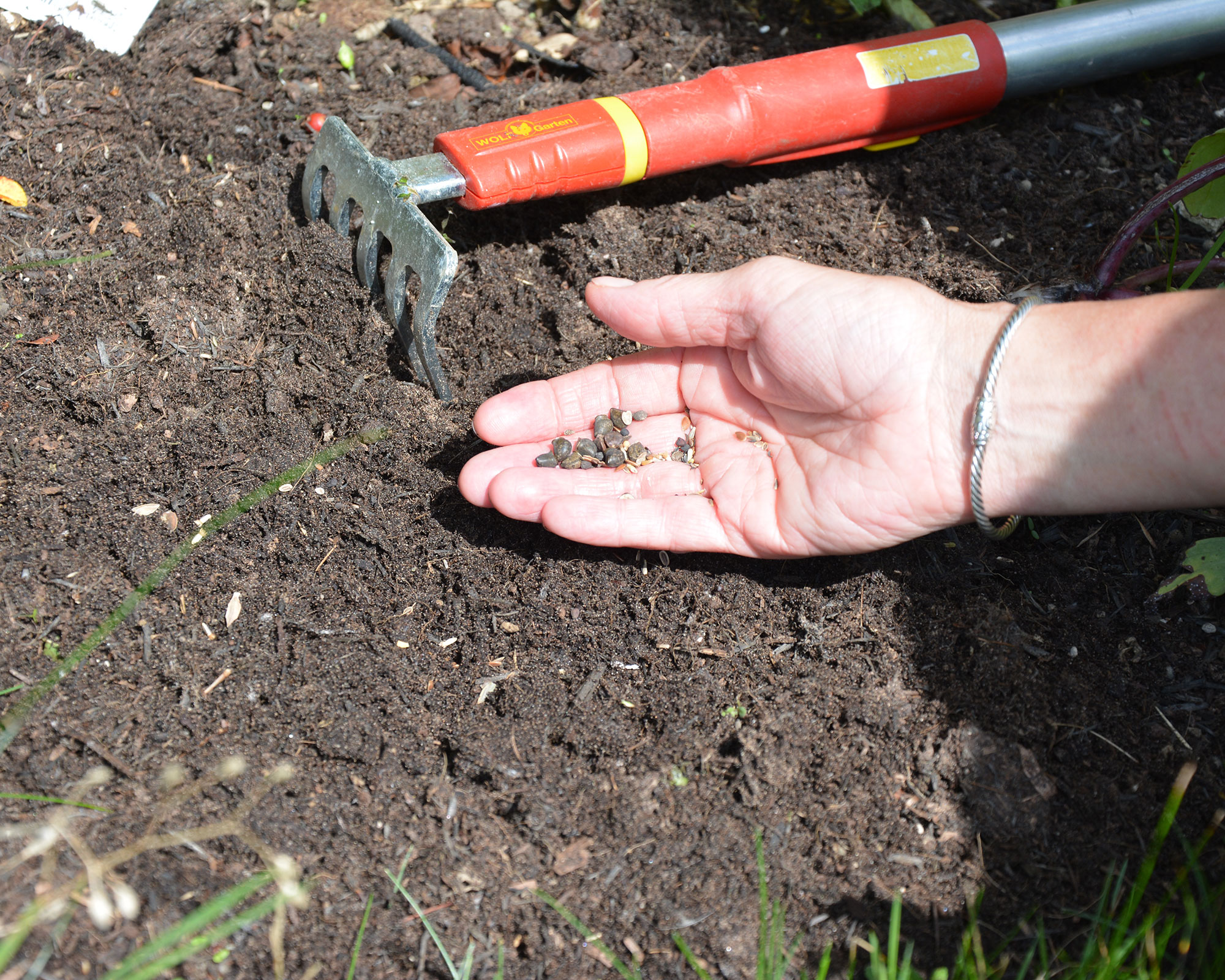

Ruth is the gardening editor of Amateur Gardening magazine and spends her working days carrying out, writing about and photographing the tasks the readers should be carrying out each week, as well as testing many of the new products that arrive on the gardening market. She is horticulturally trained, with a qualification from the Royal Horticultural Society.
